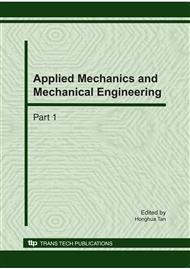p.332
p.337
p.343
p.349
p.354
p.360
p.365
p.370
p.377
Mechanics Model and Machining Distortion Analysis for High Speed Milling of Titanium Alloy Aircraft Monolithic Component
Abstract:
A physics-based material processing simulation is approached to research the machining distortion for high speed milling of titanium alloy aircraft monolithic component by the finite element method (FEM). Several mechanics models, such as material constitutive model, material removal model, and cutting loads application model, have been implemented to improve the accuracy of finite element simulation. The distortion result of aircraft monolithic component resulting from FEM show a good agreement with the experiment result. The research result shows that the distortion law of titanium alloy aircraft monolithic component is bending distortion and protruding upward, and the maximum distortion dimension lies in the middle of monolithic component.
Info:
Periodical:
Pages:
354-359
Citation:
Online since:
August 2010
Authors:
Price:
Сopyright:
© 2010 Trans Tech Publications Ltd. All Rights Reserved
Share:
Citation:


